-
 Bitcoin
Bitcoin $84,648.7073
1.97% -
 Ethereum
Ethereum $1,881.9386
2.45% -
 Tether USDt
Tether USDt $0.9998
0.00% -
 XRP
XRP $2.1026
0.38% -
 BNB
BNB $601.4644
-1.14% -
 Solana
Solana $124.9250
-0.72% -
 USDC
USDC $1.0000
0.02% -
 Dogecoin
Dogecoin $0.1719
2.18% -
 Cardano
Cardano $0.6757
1.17% -
 TRON
TRON $0.2384
0.45% -
 Toncoin
Toncoin $4.0011
-2.68% -
 Chainlink
Chainlink $13.7441
1.08% -
 UNUS SED LEO
UNUS SED LEO $9.4106
2.26% -
 Stellar
Stellar $0.2689
1.56% -
 Avalanche
Avalanche $19.2640
1.44% -
 Sui
Sui $2.3638
1.05% -
 Shiba Inu
Shiba Inu $0.0...01238
-2.28% -
 Hedera
Hedera $0.1662
1.79% -
 Polkadot
Polkadot $4.1151
0.69% -
 Litecoin
Litecoin $83.1095
-0.72% -
 MANTRA
MANTRA $6.2091
-1.52% -
 Bitcoin Cash
Bitcoin Cash $305.6275
0.05% -
 Bitget Token
Bitget Token $4.6045
0.36% -
 Dai
Dai $0.9999
0.00% -
 Ethena USDe
Ethena USDe $0.9999
0.03% -
 Pi
Pi $0.6946
-3.71% -
 Hyperliquid
Hyperliquid $13.2719
-1.89% -
 Monero
Monero $218.1561
0.57% -
 Uniswap
Uniswap $6.1390
1.78% -
 Aptos
Aptos $5.3009
0.06%
How to apply KDJ indicator in short-term trading?
The KDJ indicator, useful in short-term crypto trading, signals entry/exit points via crossovers and divergence, enhanced by combining with RSI, MACD, and moving averages.
Mar 31, 2025 at 10:28 pm
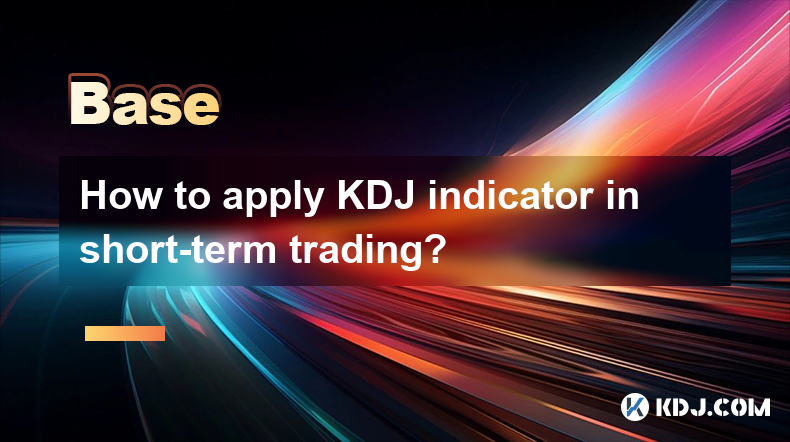
The KDJ indicator, also known as the Stochastic Oscillator, is a popular technical analysis tool used by traders to identify potential buy and sell signals in the cryptocurrency market. In short-term trading, the KDJ indicator can be particularly useful due to its sensitivity to price movements. This article will explore how to effectively apply the KDJ indicator in short-term trading strategies, focusing on its components, interpretation, and practical application.
Understanding the KDJ Indicator
The KDJ indicator consists of three lines: the K line, the D line, and the J line. The K line represents the current market momentum, the D line is a moving average of the K line, and the J line is a more sensitive indicator that can signal overbought or oversold conditions. The values of these lines range from 0 to 100, with readings above 80 typically indicating overbought conditions and readings below 20 indicating oversold conditions.
Setting Up the KDJ Indicator
To apply the KDJ indicator in short-term trading, you first need to set it up on your trading platform. Most platforms allow you to customize the parameters of the KDJ indicator, such as the period length. For short-term trading, a shorter period, such as 9 or 14, is often used to increase sensitivity to price changes.
- Open your trading platform and navigate to the indicators section.
- Search for the KDJ or Stochastic Oscillator and add it to your chart.
- Adjust the period length to a shorter setting, such as 9 or 14, to suit short-term trading.
Interpreting KDJ Signals
In short-term trading, the KDJ indicator can provide several types of signals. The most common signals are crossovers and divergence. A bullish signal occurs when the K line crosses above the D line, while a bearish signal occurs when the K line crosses below the D line. Divergence happens when the price of a cryptocurrency moves in the opposite direction of the KDJ indicator, which can signal a potential reversal.
- Bullish Crossover: Look for the K line crossing above the D line, especially when the KDJ is in the oversold region (below 20).
- Bearish Crossover: Watch for the K line crossing below the D line, particularly when the KDJ is in the overbought region (above 80).
- Divergence: Identify when the price of a cryptocurrency is making new highs or lows, but the KDJ indicator is not following suit, indicating a potential reversal.
Using KDJ for Entry and Exit Points
In short-term trading, the KDJ indicator can help you determine optimal entry and exit points. When the KDJ indicates an oversold condition and a bullish crossover occurs, it may be a good time to enter a long position. Conversely, when the KDJ indicates an overbought condition and a bearish crossover occurs, it may be a good time to exit a long position or enter a short position.
- Entry Point: Enter a long position when the KDJ is below 20 and the K line crosses above the D line.
- Exit Point: Exit a long position or enter a short position when the KDJ is above 80 and the K line crosses below the D line.
Combining KDJ with Other Indicators
While the KDJ indicator can be powerful on its own, combining it with other technical indicators can enhance its effectiveness in short-term trading. Popular indicators to use alongside the KDJ include the Relative Strength Index (RSI), Moving Averages, and the MACD. By using multiple indicators, you can confirm signals and reduce the likelihood of false positives.
- RSI: Use the RSI to confirm overbought and oversold conditions indicated by the KDJ.
- Moving Averages: Use moving averages to identify the overall trend and confirm KDJ signals.
- MACD: Use the MACD to confirm momentum shifts indicated by the KDJ.
Practical Example of KDJ in Short-Term Trading
Let's consider a practical example of using the KDJ indicator in short-term trading. Suppose you are trading Bitcoin (BTC) and notice that the price has been declining, pushing the KDJ into the oversold region (below 20). You then observe a bullish crossover, with the K line crossing above the D line. This could be a signal to enter a long position. As the price begins to rise, you monitor the KDJ for signs of an overbought condition (above 80) and a bearish crossover, which would signal a potential exit point.
- Monitor the price of Bitcoin and the KDJ indicator.
- Identify when the KDJ enters the oversold region and a bullish crossover occurs.
- Enter a long position and set a stop-loss to manage risk.
- Monitor the KDJ for signs of an overbought condition and a bearish crossover.
- Exit the long position when the bearish crossover occurs or the price reaches your target.
Managing Risk with KDJ
Risk management is crucial in short-term trading, and the KDJ indicator can help you set appropriate stop-loss and take-profit levels. When entering a trade based on a KDJ signal, consider setting a stop-loss just below the recent low if you are entering a long position, or just above the recent high if you are entering a short position. Take-profit levels can be set based on historical resistance and support levels or a predetermined percentage gain.
- Stop-Loss: Set a stop-loss just below the recent low for long positions or just above the recent high for short positions.
- Take-Profit: Set take-profit levels based on historical resistance and support levels or a predetermined percentage gain.
Adapting KDJ to Different Market Conditions
The effectiveness of the KDJ indicator can vary depending on market conditions. In highly volatile markets, the KDJ may generate more false signals, requiring you to adjust your strategy. In trending markets, the KDJ can be used to identify pullbacks and continuation patterns. By understanding the current market environment, you can better interpret KDJ signals and adjust your trading approach accordingly.
- Volatile Markets: Use shorter periods and be cautious of false signals.
- Trending Markets: Use the KDJ to identify pullbacks and continuation patterns.
Common Mistakes to Avoid
When using the KDJ indicator in short-term trading, there are several common mistakes to avoid. One mistake is relying solely on the KDJ without confirming signals with other indicators. Another mistake is not adjusting the KDJ parameters to suit the current market conditions. Additionally, failing to manage risk properly can lead to significant losses. By being aware of these pitfalls, you can improve your trading performance.
- Relying Solely on KDJ: Always confirm KDJ signals with other indicators.
- Not Adjusting Parameters: Adjust the KDJ period length based on market conditions.
- Poor Risk Management: Always use stop-loss and take-profit orders to manage risk.
FAQs
What is the KDJ indicator?
The KDJ indicator, also known as the Stochastic Oscillator, is a technical analysis tool used to identify potential buy and sell signals in the cryptocurrency market. It consists of three lines: the K line, the D line, and the J line, which help traders determine overbought and oversold conditions.
How do you set up the KDJ indicator for short-term trading?
To set up the KDJ indicator for short-term trading, open your trading platform, navigate to the indicators section, search for the KDJ or Stochastic Oscillator, and add it to your chart. Adjust the period length to a shorter setting, such as 9 or 14, to increase sensitivity to price changes.
What are the common signals provided by the KDJ indicator?
The KDJ indicator provides several common signals, including bullish and bearish crossovers and divergence. A bullish crossover occurs when the K line crosses above the D line, while a bearish crossover occurs when the K line crosses below the D line. Divergence happens when the price of a cryptocurrency moves in the opposite direction of the KDJ indicator, signaling a potential reversal.
How can the KDJ indicator be used to determine entry and exit points in short-term trading?
In short-term trading, the KDJ indicator can help determine entry and exit points. Enter a long position when the KDJ is below 20 and the K line crosses above the D line. Exit a long position or enter a short position when the KDJ is above 80 and the K line crosses below the D line.
What other indicators can be used alongside the KDJ indicator?
Popular indicators to use alongside the KDJ include the Relative Strength Index (RSI), Moving Averages, and the MACD. These indicators can help confirm KDJ signals and reduce the likelihood of false positives.
How can risk be managed when using the KDJ indicator in short-term trading?
Risk can be managed by setting appropriate stop-loss and take-profit levels. Set a stop-loss just below the recent low for long positions or just above the recent high for short positions. Take-profit levels can be set based on historical resistance and support levels or a predetermined percentage gain.
How should the KDJ indicator be adapted to different market conditions?
In highly volatile markets, use shorter periods and be cautious of false signals. In trending markets, use the KDJ to identify pullbacks and continuation patterns. By understanding the current market environment, you can better interpret KDJ signals and adjust your trading approach accordingly.
What are common mistakes to avoid when using the KDJ indicator in short-term trading?
Common mistakes include relying solely on the KDJ without confirming signals with other indicators, not adjusting the KDJ parameters to suit the current market conditions, and failing to manage risk properly. By being aware of these pitfalls, you can improve your trading performance.
Disclaimer:info@kdj.com
The information provided is not trading advice. kdj.com does not assume any responsibility for any investments made based on the information provided in this article. Cryptocurrencies are highly volatile and it is highly recommended that you invest with caution after thorough research!
If you believe that the content used on this website infringes your copyright, please contact us immediately (info@kdj.com) and we will delete it promptly.
- Bittensor (TAO) Faces Bearish Pressure; Needs to Break Above $240 Resistance to Reverse Downward Trajectory
- 2025-04-02 12:35:12
- Cryptocurrency exchange Kraken lists JUST (JST), the governance token of the JUST ecosystem
- 2025-04-02 12:35:12
- BlockDAG (BDAG) Is Quickly Becoming a Serious Challenger to Other Layer 1 Chains
- 2025-04-02 12:30:12
- Fartcoin [FARTCOIN] was likely on its way to establishing an uptrend.
- 2025-04-02 12:30:12
- BlockDAG Accelerates Toward $600M Goal After Raising $5M in 48 Hours
- 2025-04-02 12:25:12
- Ethena (ENA) Token Unlock Scheduled for Tuesday, April 2.024-04-01
- 2025-04-02 12:25:12
Related knowledge
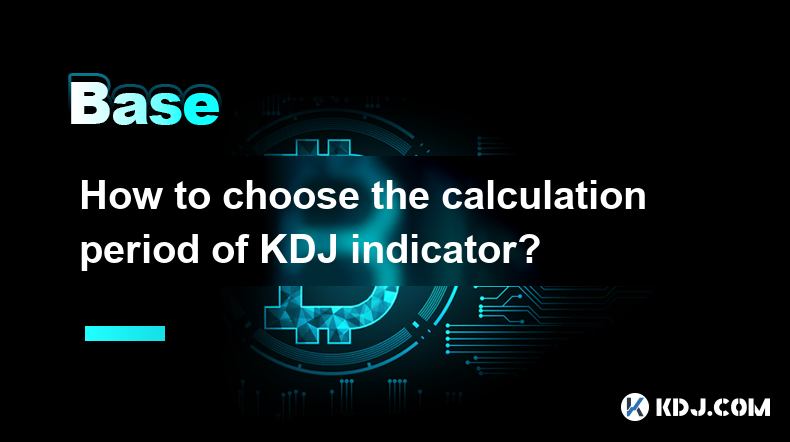
How to choose the calculation period of KDJ indicator?
Apr 02,2025 at 01:00pm
The KDJ indicator, also known as the Stochastic Oscillator, is a popular technical analysis tool used by cryptocurrency traders to identify potential buy and sell signals. The calculation period of the KDJ indicator is crucial in determining its effectiveness in predicting market trends. In this article, we will explore the factors to consider when choo...
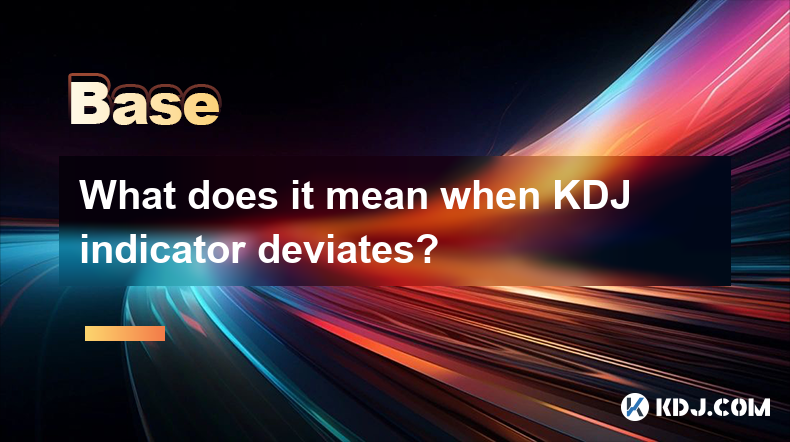
What does it mean when KDJ indicator deviates?
Apr 01,2025 at 03:08pm
The KDJ indicator, also known as the Stochastic Oscillator, is a popular technical analysis tool used in the cryptocurrency market to predict price movements. When the KDJ indicator deviates, it means that the current price of a cryptocurrency is moving away from its typical range, as indicated by the KDJ lines. This deviation can signal potential trend...

How to apply KDJ indicator in short-term trading?
Mar 31,2025 at 10:28pm
The KDJ indicator, also known as the Stochastic Oscillator, is a popular technical analysis tool used by traders to identify potential buy and sell signals in the cryptocurrency market. In short-term trading, the KDJ indicator can be particularly useful due to its sensitivity to price movements. This article will explore how to effectively apply the KDJ...
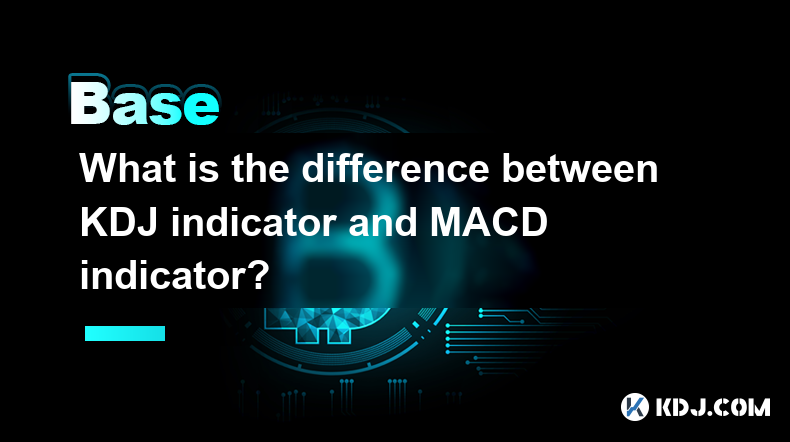
What is the difference between KDJ indicator and MACD indicator?
Apr 01,2025 at 08:21pm
The KDJ indicator and the MACD indicator are two popular technical analysis tools used by cryptocurrency traders to predict market trends and make informed trading decisions. While both indicators aim to help traders identify potential buy and sell signals, they differ in their construction, interpretation, and application. In this article, we will expl...
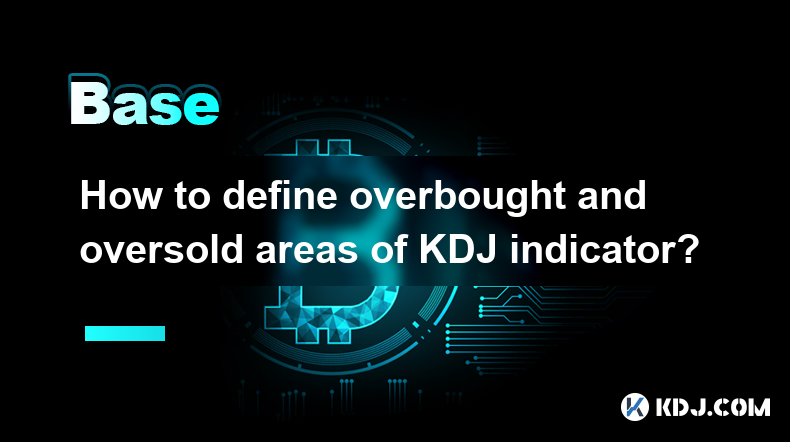
How to define overbought and oversold areas of KDJ indicator?
Apr 01,2025 at 06:42am
The KDJ indicator, also known as the Stochastic Oscillator, is a popular technical analysis tool used by traders to identify potential overbought and oversold conditions in the cryptocurrency market. Understanding how to define these areas can help traders make more informed decisions about when to buy or sell their assets. In this article, we will expl...
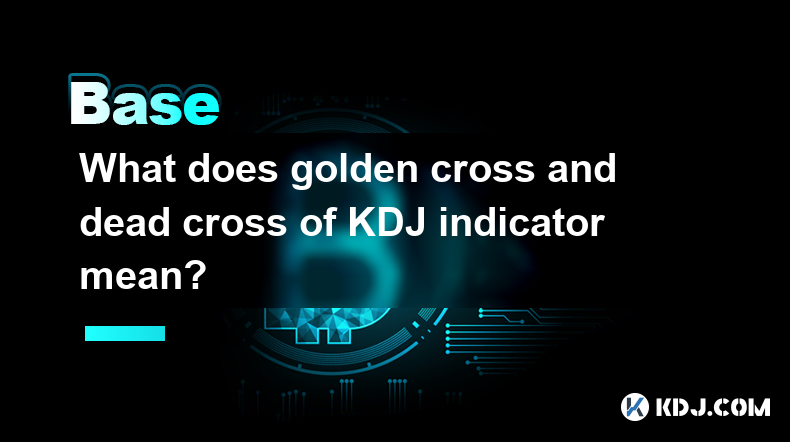
What does golden cross and dead cross of KDJ indicator mean?
Apr 02,2025 at 02:08am
The KDJ indicator, also known as the Stochastic Oscillator, is a popular technical analysis tool used by cryptocurrency traders to identify potential buy and sell signals. It consists of three lines: K, D, and J, which fluctuate between 0 and 100. The golden cross and dead cross of the KDJ indicator are important signals that traders look for to make in...

How to choose the calculation period of KDJ indicator?
Apr 02,2025 at 01:00pm
The KDJ indicator, also known as the Stochastic Oscillator, is a popular technical analysis tool used by cryptocurrency traders to identify potential buy and sell signals. The calculation period of the KDJ indicator is crucial in determining its effectiveness in predicting market trends. In this article, we will explore the factors to consider when choo...

What does it mean when KDJ indicator deviates?
Apr 01,2025 at 03:08pm
The KDJ indicator, also known as the Stochastic Oscillator, is a popular technical analysis tool used in the cryptocurrency market to predict price movements. When the KDJ indicator deviates, it means that the current price of a cryptocurrency is moving away from its typical range, as indicated by the KDJ lines. This deviation can signal potential trend...

How to apply KDJ indicator in short-term trading?
Mar 31,2025 at 10:28pm
The KDJ indicator, also known as the Stochastic Oscillator, is a popular technical analysis tool used by traders to identify potential buy and sell signals in the cryptocurrency market. In short-term trading, the KDJ indicator can be particularly useful due to its sensitivity to price movements. This article will explore how to effectively apply the KDJ...

What is the difference between KDJ indicator and MACD indicator?
Apr 01,2025 at 08:21pm
The KDJ indicator and the MACD indicator are two popular technical analysis tools used by cryptocurrency traders to predict market trends and make informed trading decisions. While both indicators aim to help traders identify potential buy and sell signals, they differ in their construction, interpretation, and application. In this article, we will expl...

How to define overbought and oversold areas of KDJ indicator?
Apr 01,2025 at 06:42am
The KDJ indicator, also known as the Stochastic Oscillator, is a popular technical analysis tool used by traders to identify potential overbought and oversold conditions in the cryptocurrency market. Understanding how to define these areas can help traders make more informed decisions about when to buy or sell their assets. In this article, we will expl...

What does golden cross and dead cross of KDJ indicator mean?
Apr 02,2025 at 02:08am
The KDJ indicator, also known as the Stochastic Oscillator, is a popular technical analysis tool used by cryptocurrency traders to identify potential buy and sell signals. It consists of three lines: K, D, and J, which fluctuate between 0 and 100. The golden cross and dead cross of the KDJ indicator are important signals that traders look for to make in...
See all articles

























































































